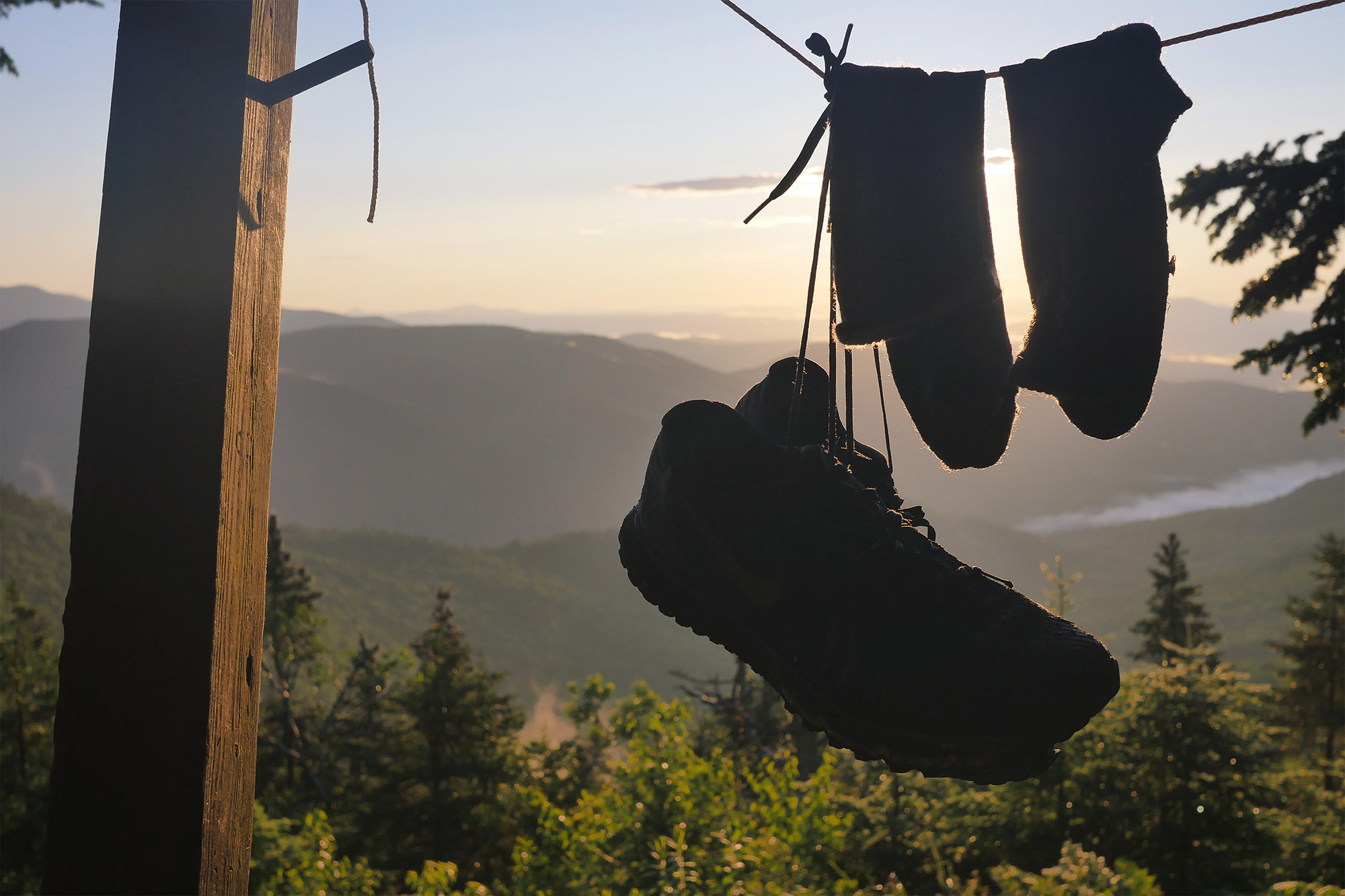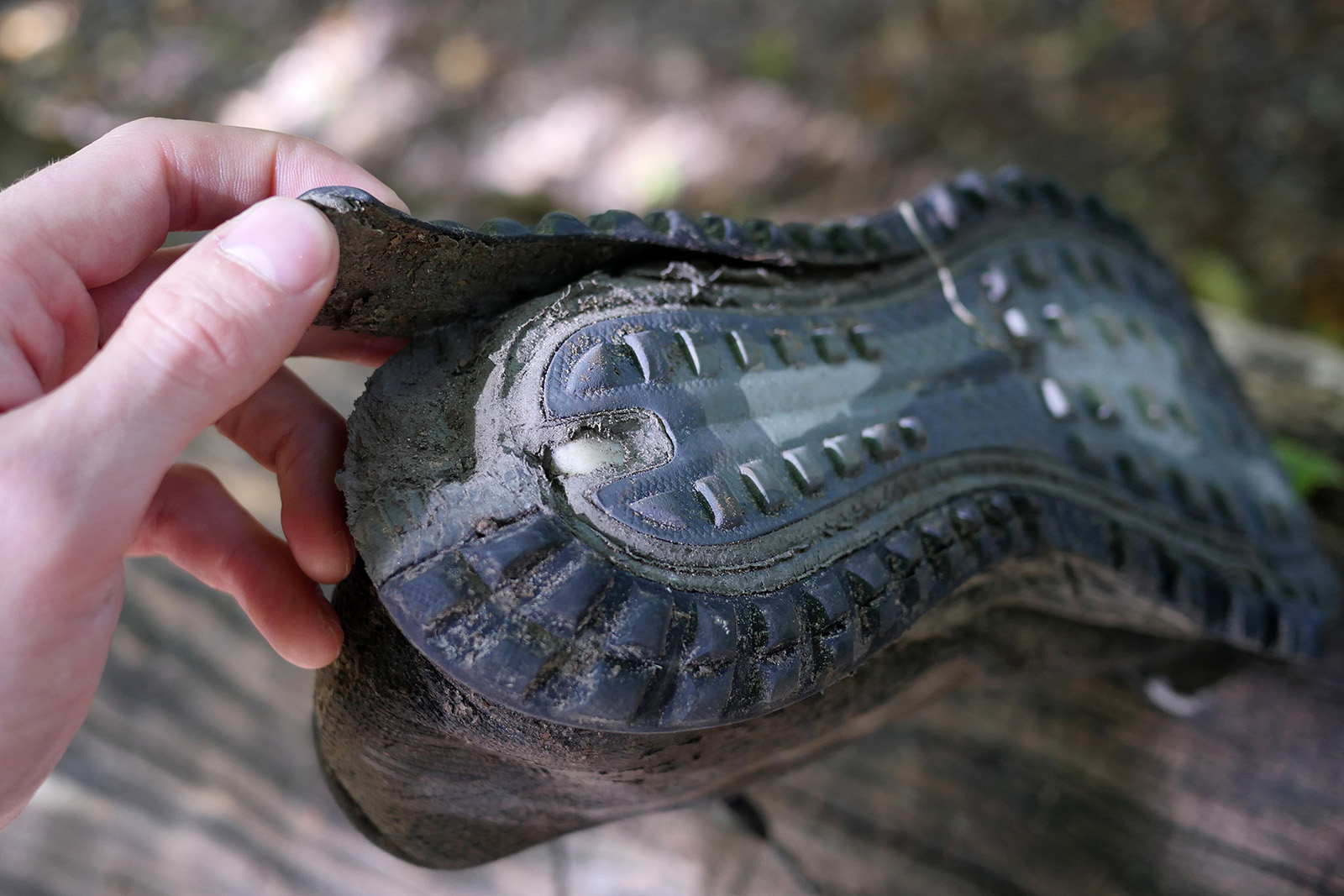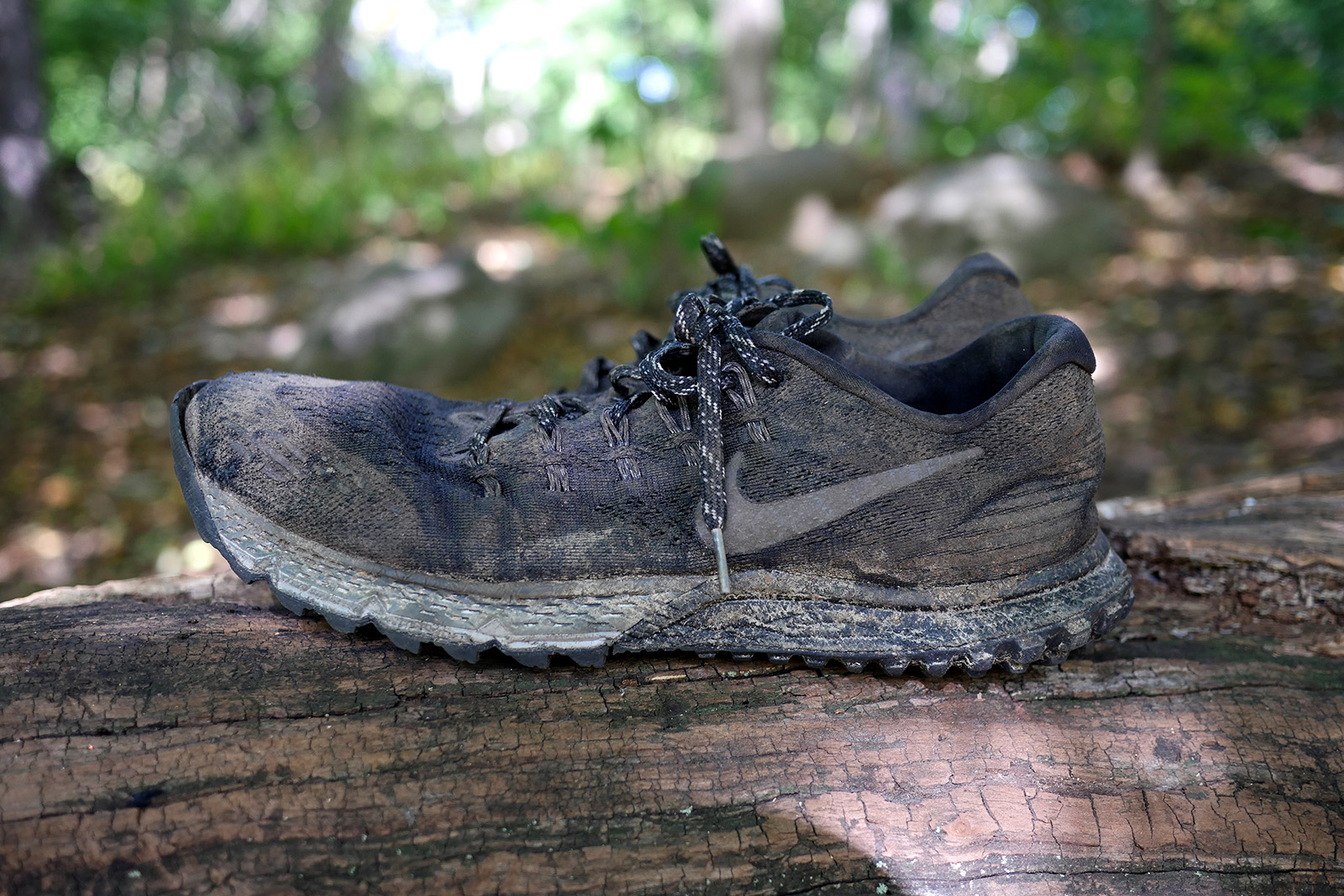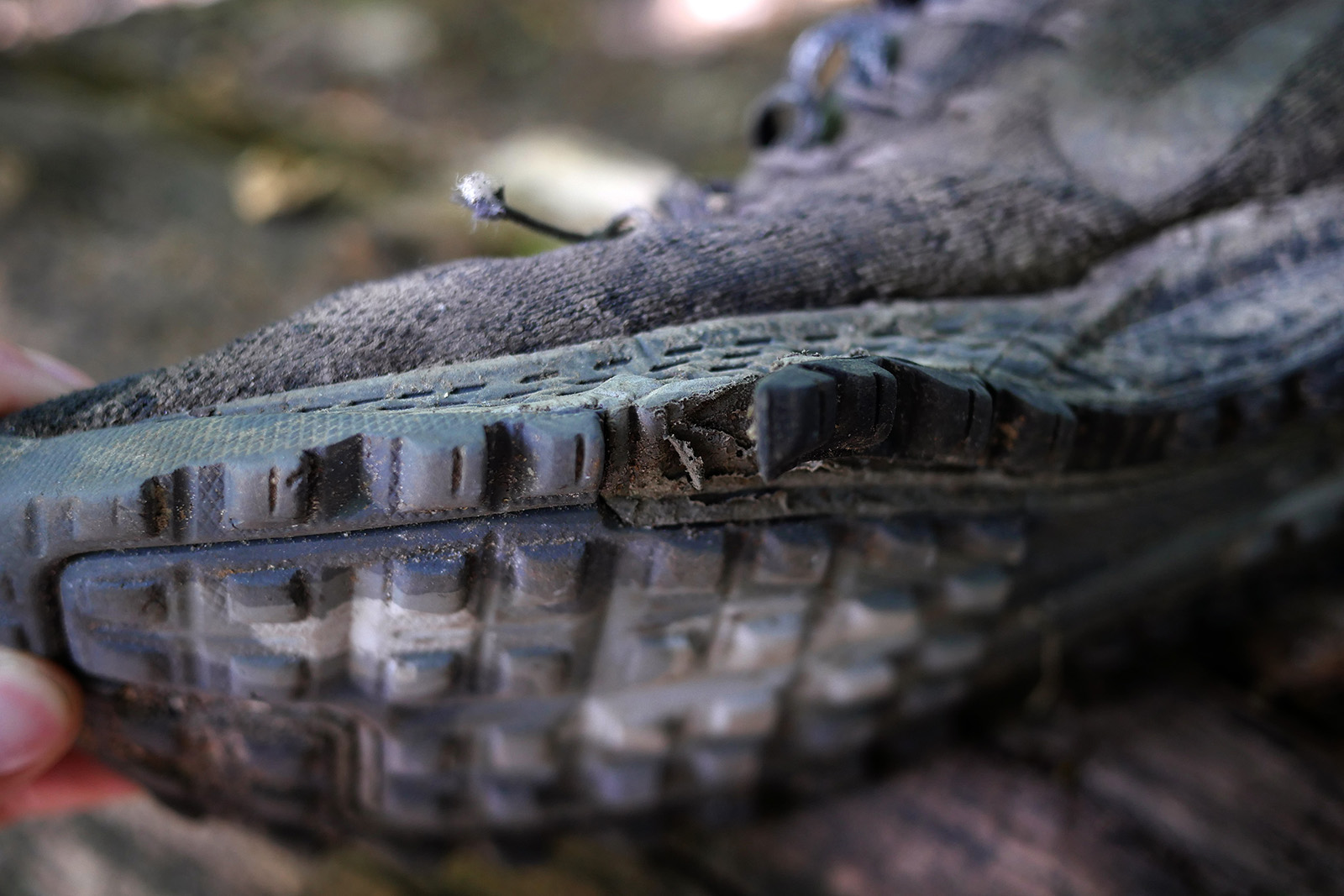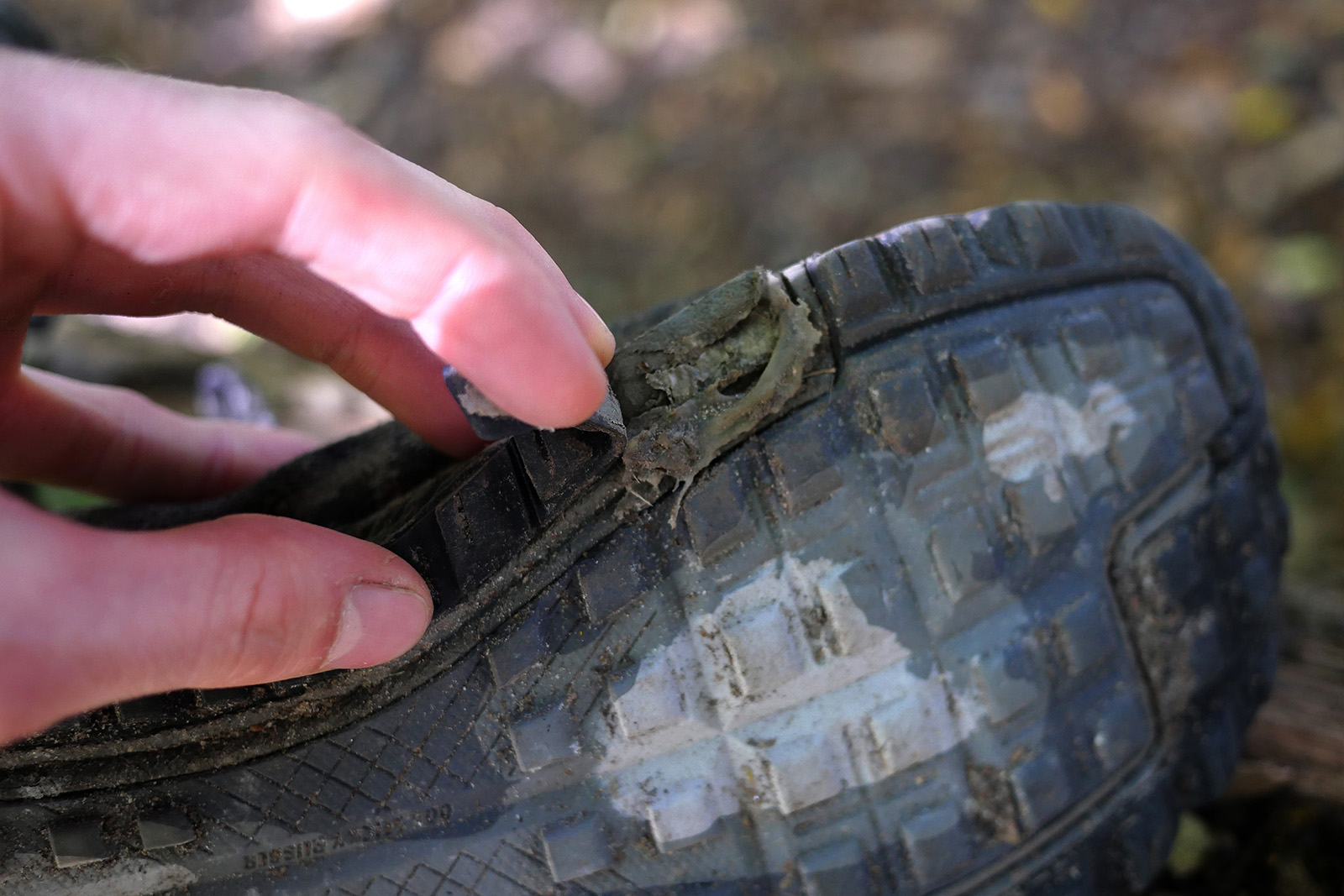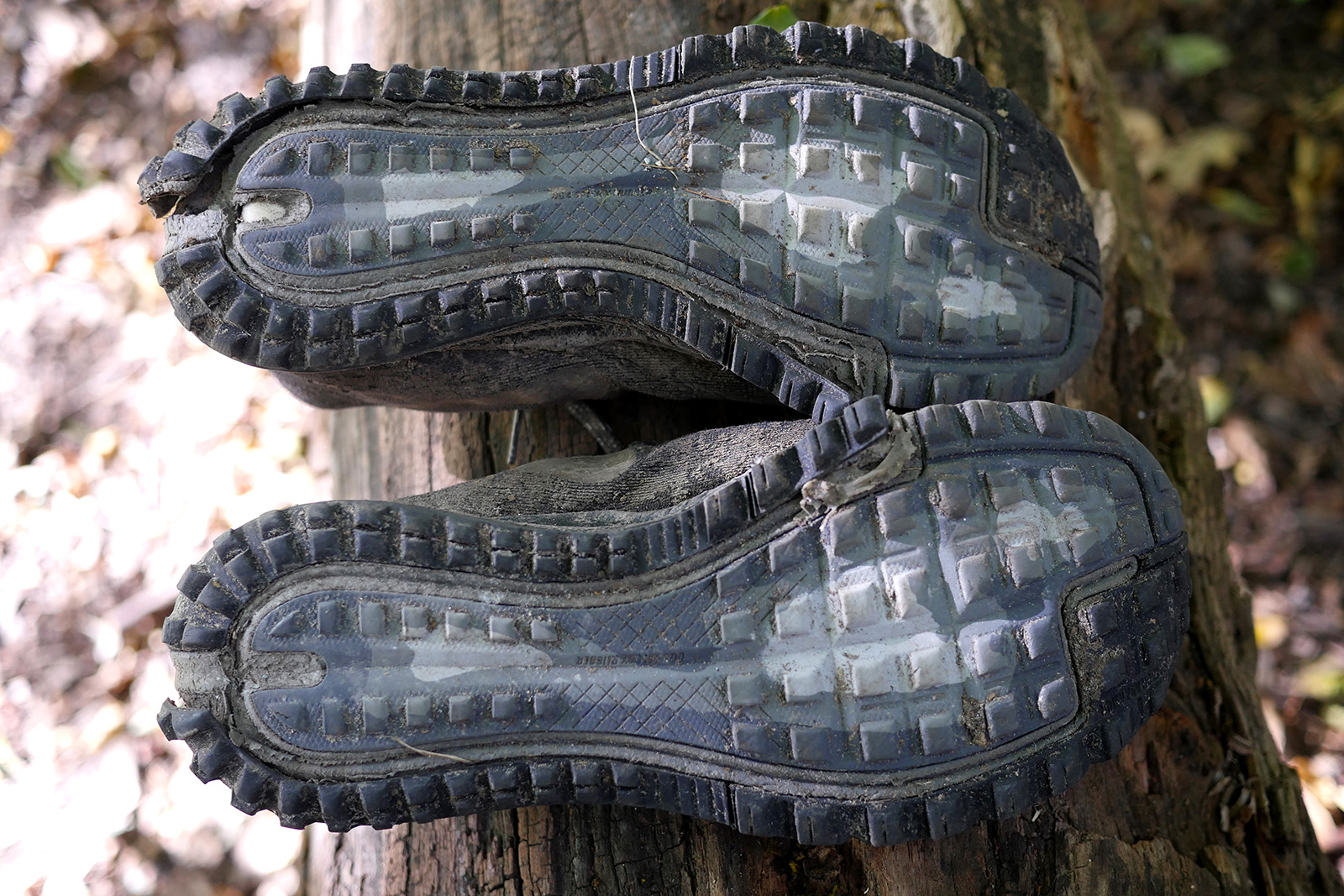This summer I thru-hiked the Vermont Long Trail and the shoes I chose to wear were the Nike Terra Kiger 3. I’ve always been a big fan of Nike and after reading the exceptional reviews of their revamped trail running line, I knew I had to give them a try. Unfortunately, America’s muddiest root-filled trail proved to be too much for the Terra Kigers.
*Note that Nike has released a newer model of the Terra Kiger with minor updates.
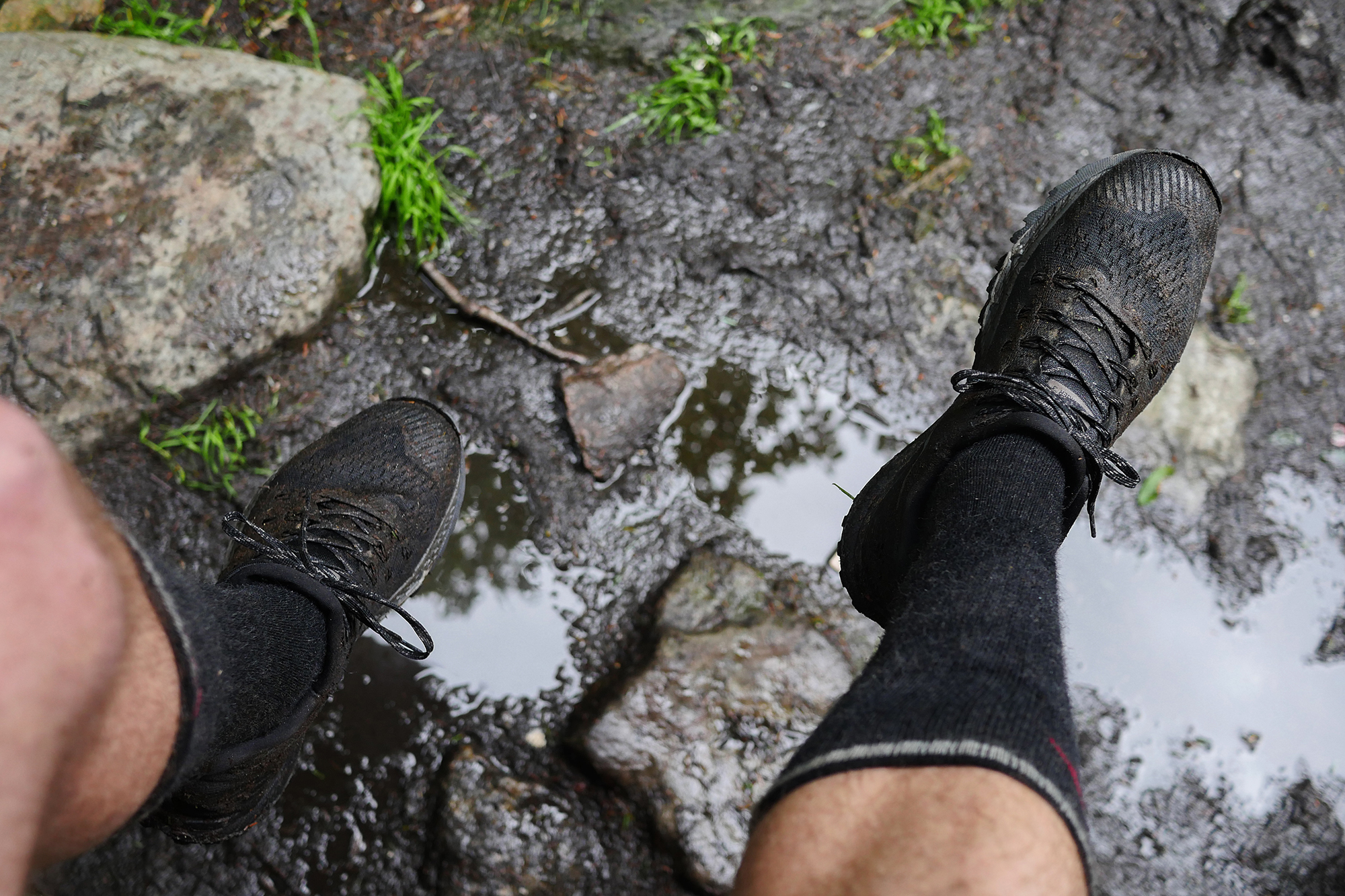
FEELING GOOD
The past three years since I got back into hiking, my go-to shoe was the Saucony Peregrine, a minimal trail runner praised by runners and hikers alike. When it came time to upgrade for 2016-17, I almost stuck to my faithful Peregrine’s; but when Nike dropped a new line of trail runners my interests were piqued. Having grown up loving the Nike brand for its cultural impact and clean aesthetic, I was hyped to hear they were reentering the trail running space. Of course I was skeptical at first, but after reading highly-praised reviews and realizing they were very similar to the Peregrines, I pulled the trigger. Feeling good after a test run, three days and sixty miles on a section of the AT, I felt confident enough to bring them on my first official thru-hike. If you’re not familiar, the Long Trail is America’s oldest long-distance trail, spanning the entire length of Vermont: 273 miles. Anyone familiar with the LT will tell you that it’s rough, muddy, and at times overgrown.
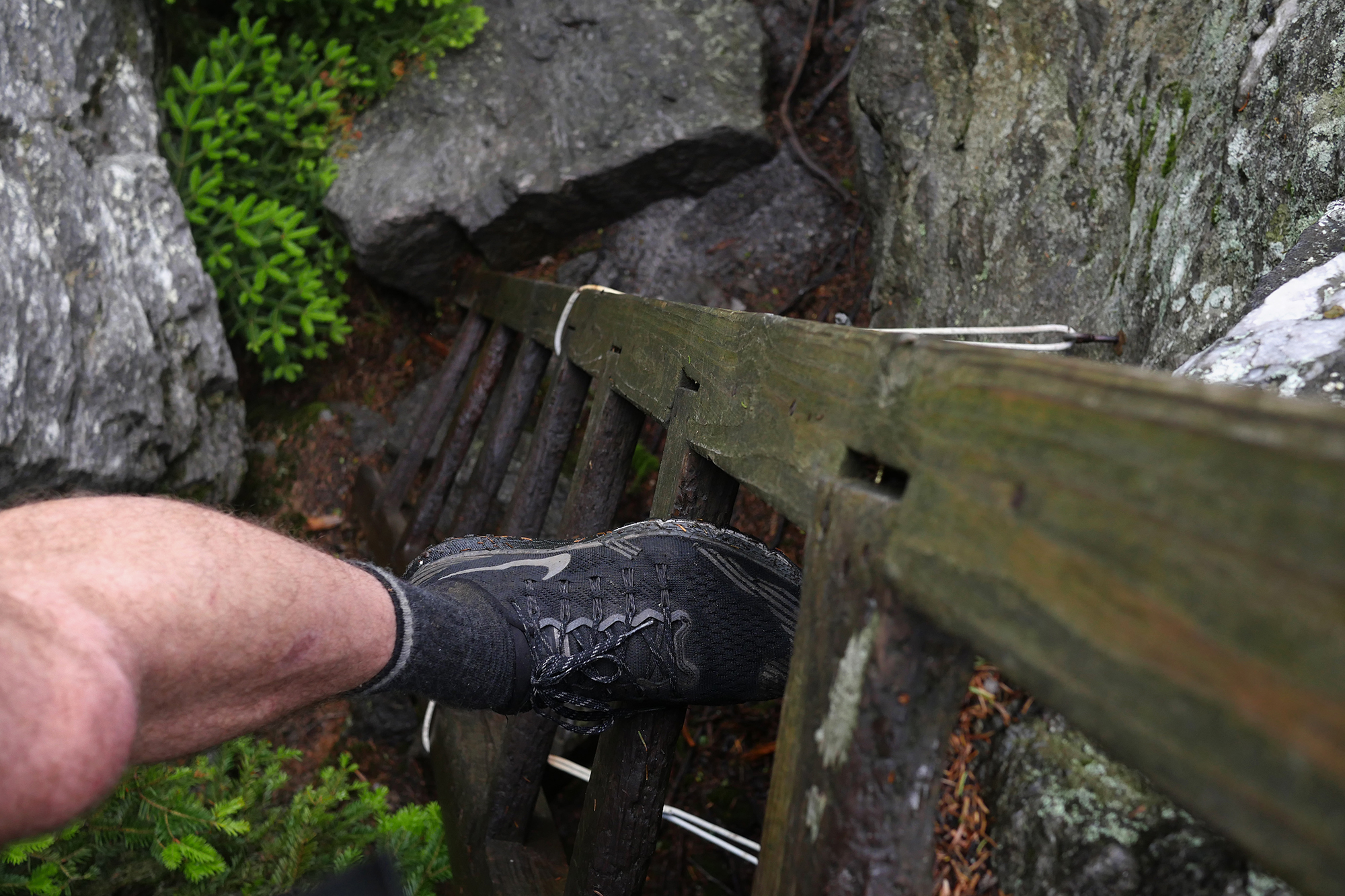
MY NAME IS MUD
You might think you can dodge and jump over muddy puddles with the best of them, but you won’t stay dry for long on the LT. I found myself walking in soaked shoes for most of my first days on the trail and despite the constant plunges, the Terra Kiger’s felt great. When I initially bought them I was surprised at how small they ran. I went up a full size from my street shoe before I found the perfect balance between snug, secure, and room for swelling. This glove-like fit was perfect for staying comfortable while constantly wet. The insoles never felt too squishy and the thin materials that make up the shoes’ outer allow water to escape easily. I was happy to wake up every morning to a substantially dryer shoe than the evening prior.
The LT can sometimes feel like you’re walking in a creek bed; it’s filled with endless wet rocks and eroded paths that only leave roots for steps. Thankfully, the Kigers have excellent traction. A waffle-patterned outsole keeps you solidly gripped to the surface you’re stepping on. I’m used to slipping on wet rocks occasionally but honestly can’t recall any major slips on this hike. Heel slippage is basically non-existent thanks to an inner mesh liner and large elastic tongue helping to hold your foot in place.
For being a lightweight shoe, the Kiger packs a solid amount of protection. There is no rock plate but the thick Phylon foam soles and “Nike air pods” underfoot keep you floating above sharp rocks and hard strikes. The sides and top are made up of a breathable lightweight mesh material so you won’t find much protection there. Of course, this is a usual trade-off for most trail runners. The toe bumper is minimal but kept me from experiencing too much pain from the occasional rock kick, which used to drive me nuts in my Peregrines.
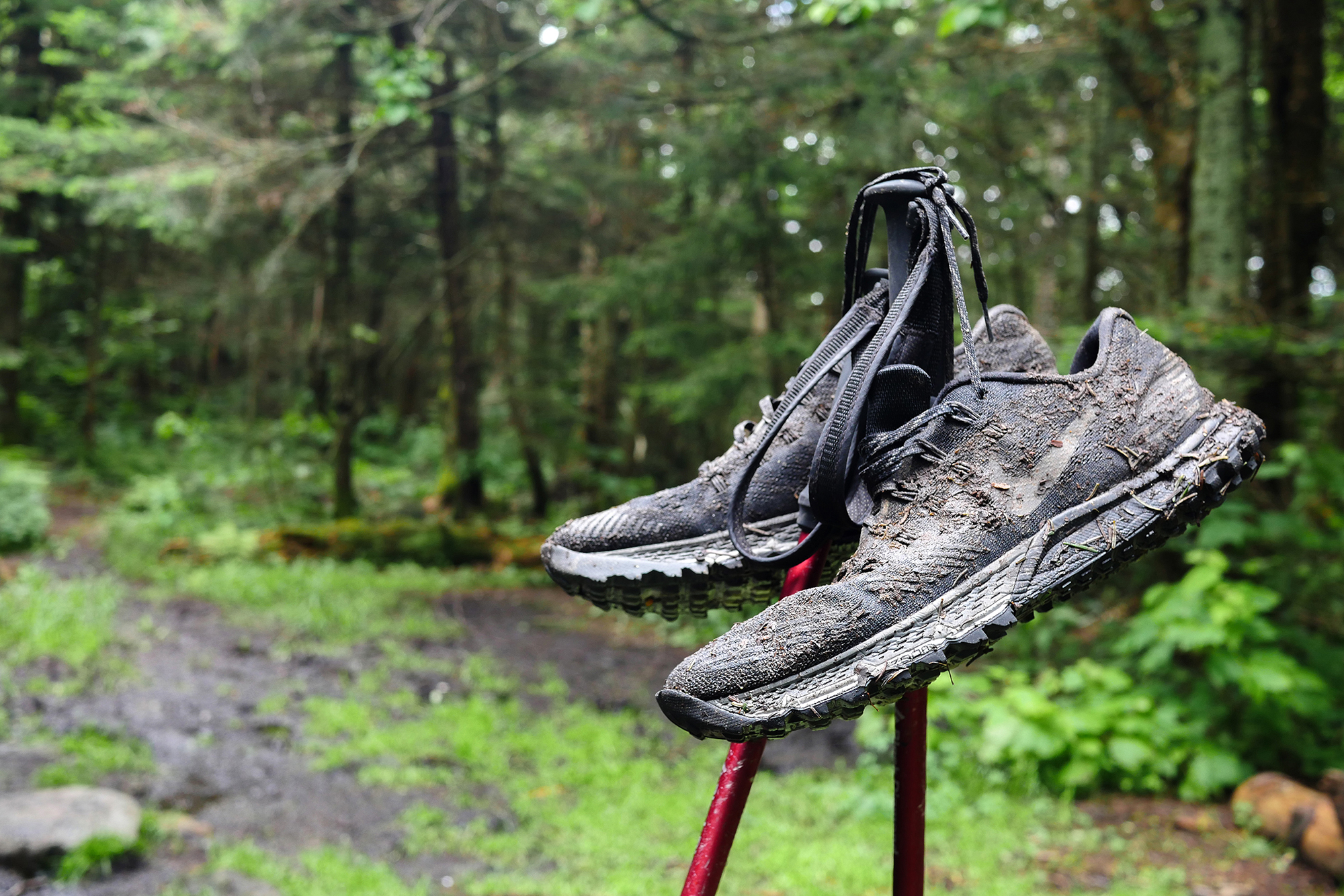
BREAKING POINT
The Kiger is a well-constructed shoe and feels good right out of the box. Sadly 273 miles on arguably one the most rugged trails in America brought this shoe to its breaking point…and then some. At first, only small wear and tear occurred, which is expected on the trail. There was a small tear of the lacing system (Kiger 4 has updated the lacing and looks more durable) and of course the toe rubber frayed up. But around day twelve the tread of the sole started to tear away from the body, starting at the top near my toe and slowly working its way downward. On day 16 we decided to take a much-needed break off the trail and stay at the famed Long Trail Inn. I bought some shoe goo in town, which I liberally applied in an attempt to reconnect the sole. At this point it had come about half way off on the edge of the shoe. I didn’t consciously notice it with each step, but I think it must have led to me walking a bit funny. I can only assume this contributed to the overall painful experience that is walking 18+ miles a day for 23 days. By the end of the hike both of my shoes treads had peeled off substantially, one in the back and one in the front.
LET DOWN
As much as I like the way this shoe fits, feels and looks I can’t recommend it as a serious long distance hiking shoe. I know it’s not geared toward hikers but I would think most serious trail runners would expect to get more than 200+ miles out of the life of their shoe as well. I saw a good amount of runners on the LT, so the terrain is not out of the ordinary for them. Shoe breakdown for long-distance hiking is perfectly normal and to be expected but total breakdown under 200 miles is just not acceptable in my book. Granted this is the furthest I’ve ever walked in a pair of trail runners. Nike has updated this model and looks like it did make some slight tweaks that would affect durability, but I can’t imagine they did a full overhaul. Maybe a few more models and they will get there. In the mean time I will be looking elsewhere for a great pair of long-distance hiking shoes.
